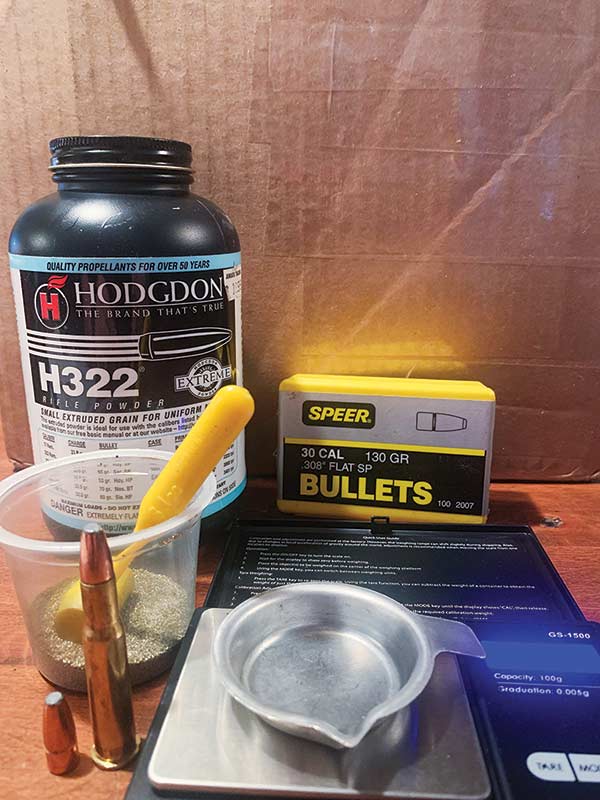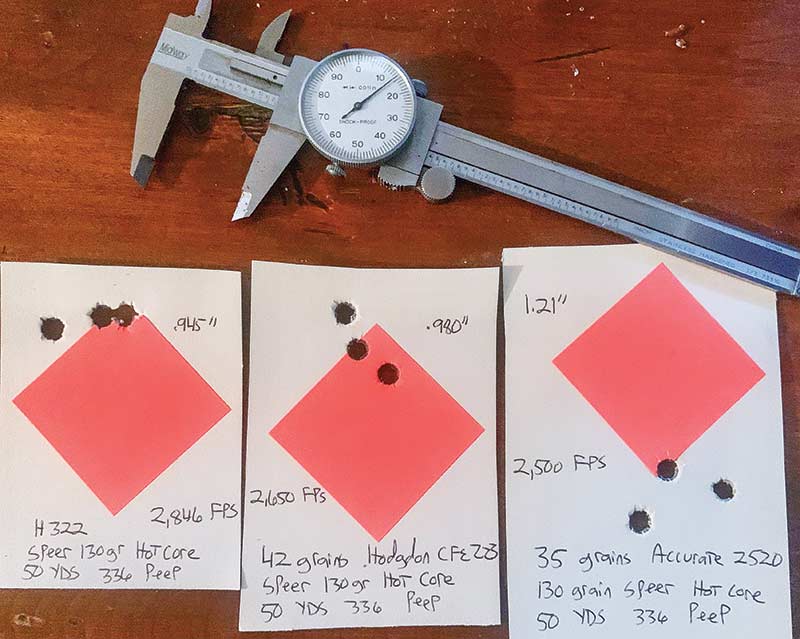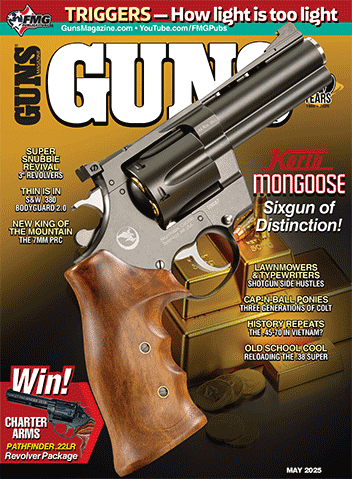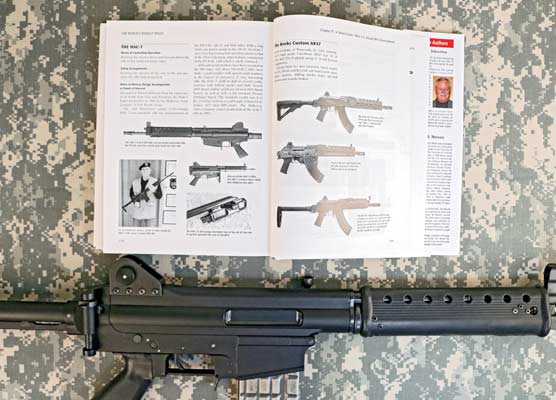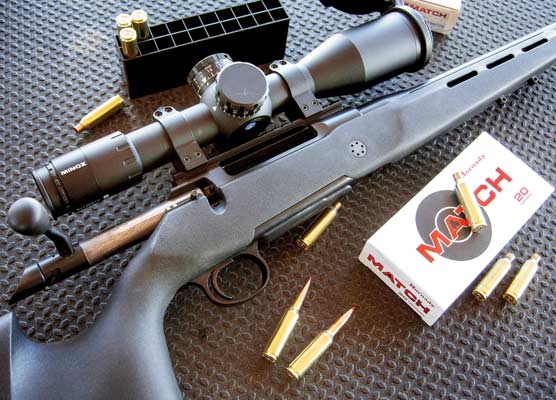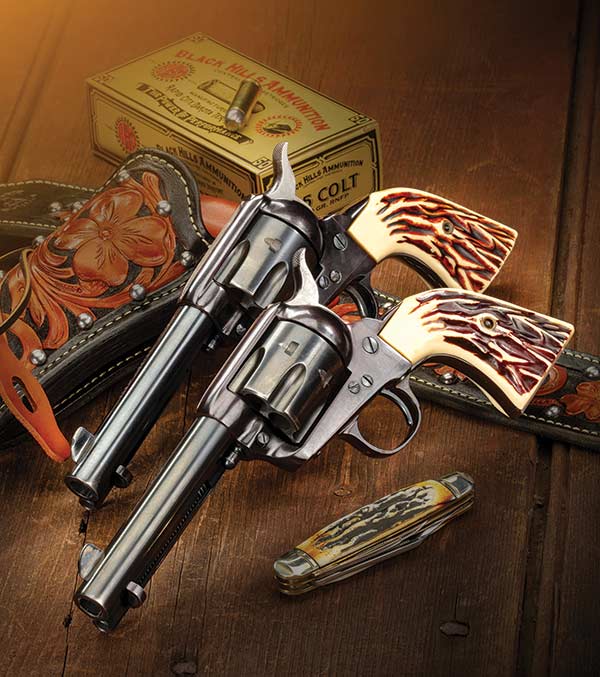Turbocharging your 30-30
Light Is Right For Laser Performance
Most subjects are secular, meaning “what comes around goes around,” and what applies to one topic can usually be carried over to something else. This explains how the idea for this article came about. I recently worked with a couple of New Ultra-Light Arms (NULA) bolt guns from Wilson Combat. The small actioned bolt-action rifle (20S) was chambered in 300 HAM’R.
The 300 HAM’R case is built from .223/5.56 cartridge brass. The brass is shortened, then necked up to .308 caliber. Bill Wilson is a dedicated hog hunter among other things and his favorite hunting arm was naturally one of his AR-10 rifles chambered in .308 Winchester. But Bill wanted a cartridge he could use in the lighter AR-15 platform, so being an innovative sort of guy, he designed the 300 HAM’R cartridge.
The initial goal was to duplicate .30-30 ballistics with guns having the same barrel length. As a matter of fact, one of the cartridge names kicked around was the AR 30-30. Since Bill enjoys hunting pigs, the 300 HAM’R stuck for obvious reasons and the cartridge is a prime lesson on cartridge efficiency.
Wilson Combat recently purchased Lehigh Defense and Bill has experimented, researched, tested and designed extensively with his bullets by shooting them into water tanks, ballistic gelatin, and actual hogs, both live and cadaver. One of the bullets Bill found to be exceptional on hogs and deer, besides his own high-tech marvels, was Speer’s 130-grain Hot Core flat-nose bullets.
You know me, I’m all about shooting my own cast bullets but a relatively inexpensive Speer Hot Core bullet designed by Vernon Speer years ago provided me with a feeling of nostalgia. Plus, I already had several boxes in my loading room.
Not Pappy’s Gun
You’ve heard it before — the .30-30 is so weak and outdated it’s barely capable of taking care of rodents, let alone deer. Plus, the rainbow trajectory makes it hard to hit anything past 100 yards. Boy, have times changed. When introduced in 1894, the .30-30 was considered the flattest shooting rifle there was using this new-fangled thing called smokeless powder. Typical .30-30 velocities are listed as 2,200 FPS for a 170-grain projectile and 2,400 FPS for 150-grain bullets when chronographed from an actual 20″ carbine barrel.
Typically, I’m more of a heavy bullet, moderate-velocity kind of shooter. Good old momentum has been good to me. But speed is relative. What’s fast for a .30-30 is moderate for most other calibers. Watching Bill Wilson whack pigs, and other people whacking pigs and whitetails with the ballistic twin 300 HAM’R opened my eyes.
If an AR-15, or NULA rifle loaded with 300 HAM’R ammo using the 130-grain Speer Hot Core running 2,400-2,500 FPS, why not load Pap’s Winchester, or Marlin lever gun to the same velocities — or more — with the same bullet? Should get the same results, right?
The Loads
While looking for something in my gunroom, I stumbled over a forgotten box of handloads loaded over a stiff charge of Hodgdon H-322. I won’t provide the amount used as it is over the maximum listed in the Speer book but they averaged 2,846 FPS with a standard deviation of 8 FPS. Three shots went into 0.945″ at 50 yards with my Ruger Marlin 336 fitted with a Skinner Sights aperture peep and Bear Buster front sight, my favorite set-up for lever guns.
This combination of load and sights transforms Pappy’s ol’ lever gun into a laser beam, eh? Extraction is easy, primer/brass shows no signs of high-pressure or stress. It’s a safe load in my gun.
Another good powder is Hodgdon’s CFE 223, and it “ain’t” just for AR-15s. I worked up to the maximum listed load in the Speer manual of 42 grains. Using standard WLRP in Winchester brass velocity averaged over 2,650 FPS. Accuracy was 1.0″ with the same gun and sights. I’m sure if my lever gun were scoped, groups would be a tad smaller.
Accurate 2520 was next. Working up to 35 grains, velocity averaged just over 2,500 FPS. Again, accuracy hovered around the inch mark. As you can see, there’s a lot of options powder-wise to effectively turbocharge the Speer 130-grain Hot Core bullet.
If you’re looking for a way to improve performance in your .30-30 lever gun, or just want to have more fun shooting it with the “need for speed,” try the Speer 130-grain Hot Core bullet. I’m still a “heavy-bullet moderate-velocity” believer but these loads sure give you something to think about.


